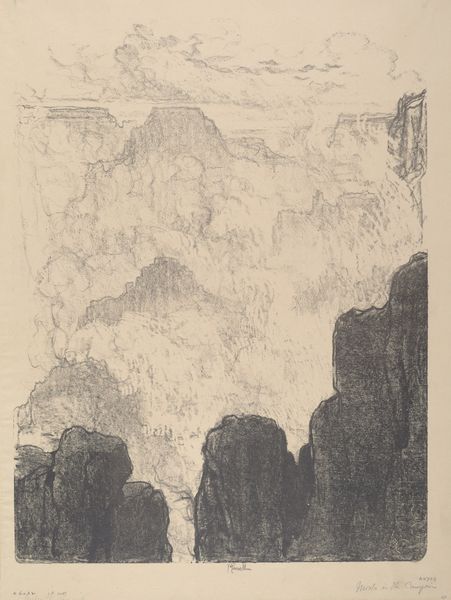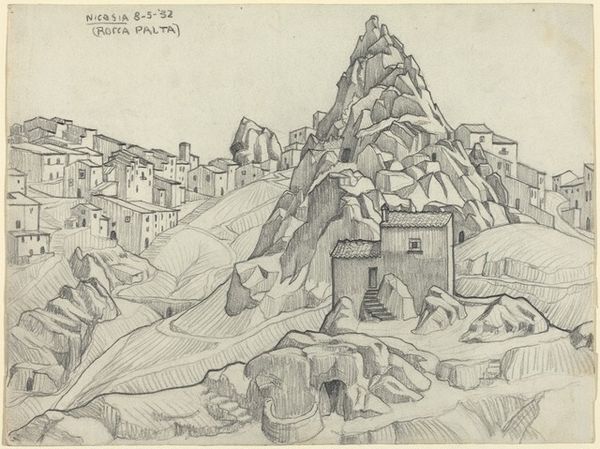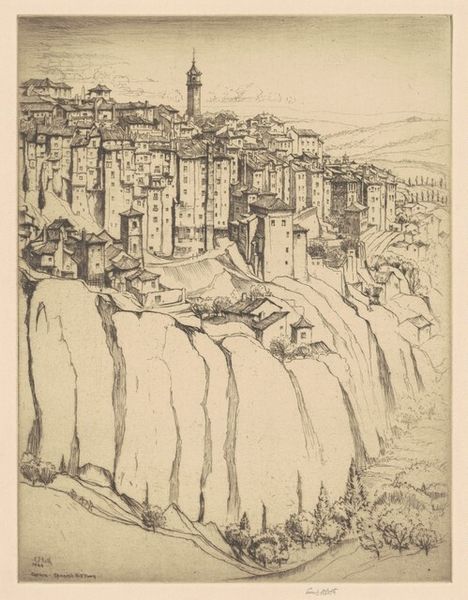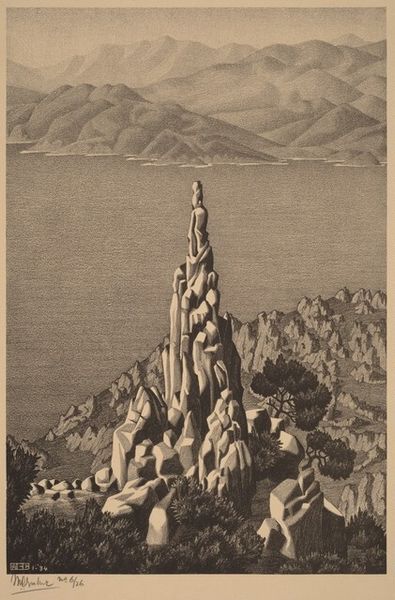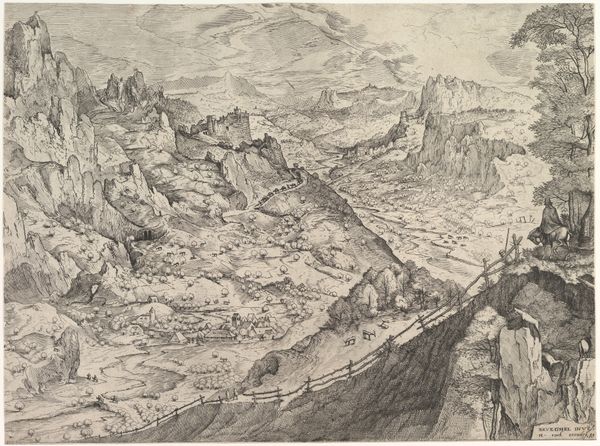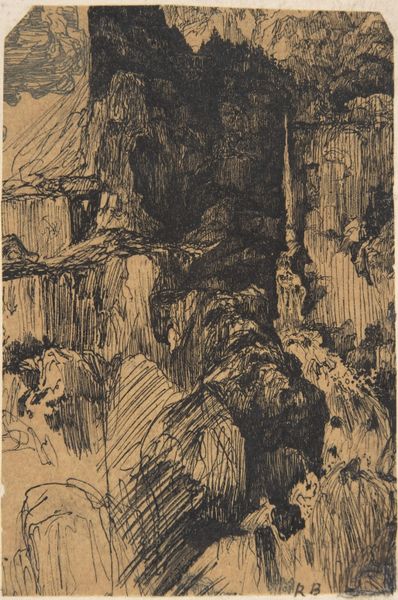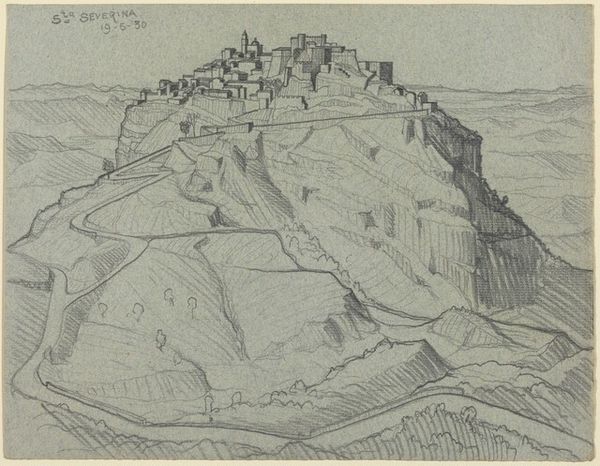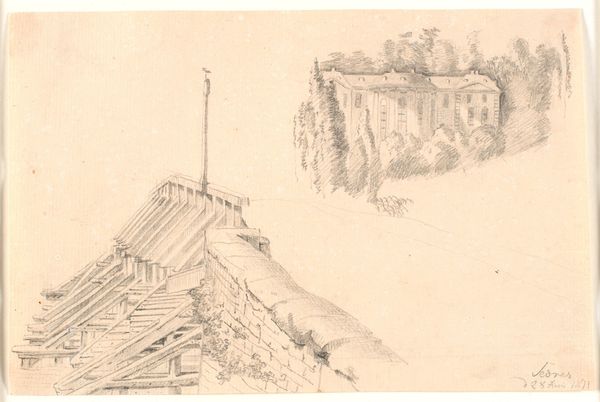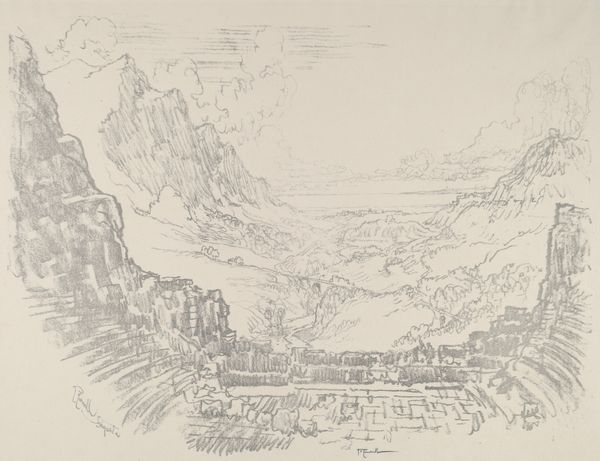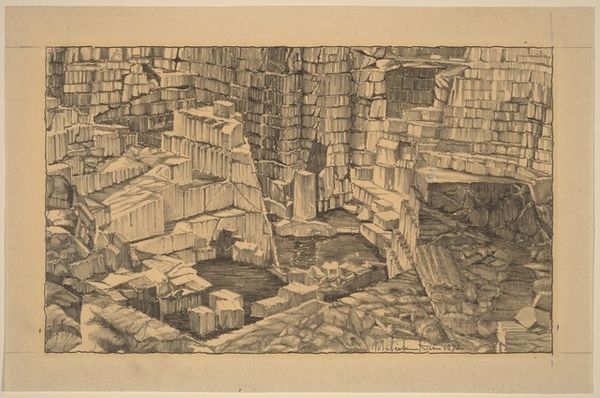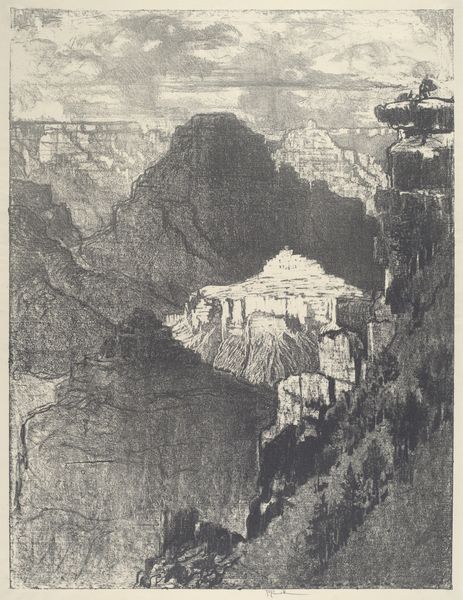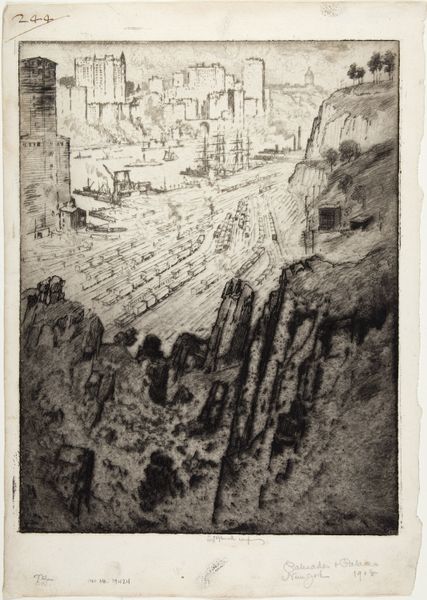
drawing, pencil
#
drawing
#
light pencil work
#
pen drawing
#
pen sketch
#
pencil sketch
#
landscape
#
personal sketchbook
#
ink drawing experimentation
#
pen-ink sketch
#
pencil
#
pen work
#
sketchbook drawing
#
cityscape
#
sketchbook art
#
realism
Dimensions: overall: 32.2 x 24.5 cm (12 11/16 x 9 5/8 in.)
Copyright: National Gallery of Art: CC0 1.0
Curator: Here we have M.C. Escher's "Atrani, Coast of Amalfi," a pencil and ink drawing from 1931. It captures the Italian coastal town nestled between dramatic cliffs. What are your first impressions? Editor: Well, right away, it feels almost… claustrophobic, but in a strangely comforting way? All those tightly packed buildings seem to cling to the rock face. It’s like a cubist ant colony suspended in time, captured with just a handful of pencils! Curator: That's an interesting take. Indeed, it marks an important shift in Escher's work. This drawing was created during his travels through Italy. The Amalfi Coast, with its vertiginous landscapes, deeply impacted him, sparking his exploration of perspective and spatial relationships that define his later, more famous, works. It highlights a critical phase where documentation becomes experiment. Editor: I can see that. There's a restless energy in the lines. They're not just depicting what's there; they're searching, almost nervously, for the right angle. I'm getting this sketchbook vibe... Do you know if Escher usually worked this way, almost live drawing, right into the sketch? Curator: Exactly, it appears as one of Escher’s ‘plein air’ pieces, sketched directly in front of the subject. You get a sense of immediacy in this sketch, compared to, say, when the printing process allows a lot more measured interventions. Editor: And he does all of this with the bare minimum, barely any heavy textures and details here, leaving so much to our imagination as a viewer. Do you think Atrani being relatively free from the booming tourism of later decades has impacted Escher capturing an untouched coastline at that time? Curator: In all likelihood, yes, but also consider how places, through their very representations, come to be inscribed in our historical consciousness and collective imaginations. And works like these arguably contributed significantly to how Atrani, and by extension, the Amalfi Coast, are perceived as an idyllic retreat in our culture. Editor: It definitely puts the 'escape' into 'landscape.' I think there's such charm and mystery in the way Escher reduced everything to essential lines. Now that you have mentioned tourism I am sure visiting Atrani will never quite equal capturing that precise, Escher’s unique, angle. Thank you for walking me through a different way of looking at this work! Curator: My pleasure. I hope our listeners also enjoyed the insight into this particular work of art.
Comments
No comments
Be the first to comment and join the conversation on the ultimate creative platform.
